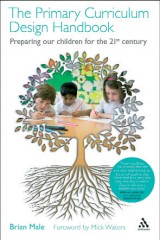The new primary curriculum isn’t due until 2014, which is a long time in the life of a primary pupil. If there’s room for improvement...
In one corner of the classroom is a skeleton grinning at the busy learners who have now grown too used to its presence to find it threatening or odd. Many of the skeleton’s constituent parts have labels attached, and bones such as the ‘tibia’, ‘fibula’ and ‘spine’ can be identified. The label ‘metatarsal’ is attached to one of the bones in the foot, and a football boot sits next to it to give relevance to this piece of information. In the other corner of the classroom is a plastic human torso with the front flapped open to reveal the internal organs. These are also labelled: heart, lungs, liver. Around the walls are charts of the human body showing the circulatory system with red arteries and blue veins. So, what sort of classroom is this? Is it the first year of medical school? Are these learners aspiring doctors? But you already know the answer, because at some point in every year these will be found in a KS1 classroom near you. And you will know what’s going on: it’s the half term when the theme is ‘Ourselves’ or ‘My Body’.
There’s no point even thinking about the curriculum at the moment, because they are going to change it all again. They sent us the Rose curriculum then abandoned it before it even started, so we might as well wait this time until we are sure what we have to do.
We could say that, but there are three very good reasons why we should be not only thinking about the curriculum, but acting on it right now.
Firstly, the new curriculum is now not due to be implemented until September 2014, which is two and a half years away. That is a long time in the life and education of a primary school child. If we can improve the curriculum, then we should do so now.
Secondly, the curriculum of schools is much more than a national curriculum. The national curriculum was introduced as a ‘common core’ of entitlement. Over the years it has encroached until it takes up all the time available. We are promised a smaller statutory curriculum with more flexibility, so now is the time to take advantage of that.
Thirdly, we can approach the present national curriculum in ways that enable us to put the curriculum together in innovative, creative and exciting ways; ways that make learning engaging and relevant; ways that make time available for children to investigate and create, to try out their own ideas and follow their own interests; ways that enable children to explore their world and find their place within it. These can be applied to the present curriculum right now, and also applied to the new one when it comes on stream. So why are we waiting? There are two things we can do straight away.
The present Programmes of tudy set out required learning in terms of subject content. But there are other aspects of learning that are important to children; such things as personal and social development, thinking and learning skills, and attitudes, values and qualities. When we write our school aims, these things figure very prominently – but where do they fit into our curriculum?
Many countries, such as Singapore, make explicit reference to these aspects of learning and have created a Curriculum Framework that shows how they fit with the subjects. In these frameworks, the subjects are seen as contexts for the development of skills, attitudes and values. Therefore there is no argument about whether skills or knowledge are more important. The answer is that both are necessary – and attitudes are important too. Skill plus knowledge plus attitude equals competency.
But doesn’t this detract from the subjects? Interestingly, when curriculum design is approached in this way, subject learning becomes deeper and understanding is enhanced. The application of subject knowledge in practical contexts requiring the deployment of skills takes learning to a higher plane (do you remember Bloom’s Taxonomy of Learning?). In my book, The primary curriculum design handbook (Continuum, 2012), I give many examples of how the addition of competencies actually energise learning because design moves away from coverage of the Programmes of Study and focuses on the way in which children apply their learning.
The Rose curriculum sought to do this in England by setting the “Essentials of Learning and Life” in the context of Areas of Learning. You can do this as a school right now. Instead of seeing the subjects as lists of content to be covered, think of them as contexts for developing children’s skills, attitudes and values. These form a framework with the subject requirements. If you do not have your own school set, then start with the one’s in the Rose curriculum and adapt them to your own circumstances. But how can we do this when there is so much to get through?
 Let us look at the classroom with the skeleton and torso for an example. Doesn’t this sound more like the first year of medical school? Why are young children expected to learn all this? No wonder we can’t find time to be creative in our design.
Let us look at the classroom with the skeleton and torso for an example. Doesn’t this sound more like the first year of medical school? Why are young children expected to learn all this? No wonder we can’t find time to be creative in our design.
But what is the actual statutory requirement that takes this half a term’s work to cover? In fact, there is only one sentence in the present Programme of Study that refers to this piece of learning, and it is very short:
“Children should be taught the main external parts of the body of humans and animals”
That’s all it says in the National Curriculum: “the main external parts”. So we might ask why is there a skeleton and torso in every classroom during this topic when the requirement is to teach the external parts? Yet if you are familiar with KS1, you know that they are always there.
We might also ask which of external parts of the body are the main ones and how many do children have to learn about? The Programmes of Study leave this open, but there is clarification in the Level Descriptions. There at Level 1 they state:
“Children should know the main external parts of the body of humans and animals, for example, head and arm”
So when we look at what the Programmes of Study actually say, we realise that the demand is in fact very reasonable both in terms of content and time. You might even think that it is not demanding enough. There cannot be many five or six year olds who cannot distinguish between their heads and their arms.
If we read on through the Programmes of Study, we find that this is by no means an isolated example. In case after case, what has become standard practice in our primary schools far exceeds the expectations of the National Curriculum itself. The huge demand perceived by schools in terms of content and time does not come from the National Curriculum itself.
The second interesting feature of this example is that the piece of work always seems to take a half of a term. In fact, every bit of the present primary national curriculum seems to fit exactly into half a term. Have you noticed? If you do the Victorians, they take a half a term. So do the Romans, and rivers or whatever else we do. They all take half a term. Indeed, that’s how we know when to stop them; we have a half-term holiday and when we come back it’s time to start something else. If we were to look at the actual requirements, we would almost always find that we do not need to spend so long on each aspect. The same will be true of the new national curriculum. Whatever it says, we need to look at it in terms of what experiences children will need in order to learn the things required. If we want to take longer and go wider and deeper, then we can. But if we want to cover some aspects in afternoon so we can focus on something else, then we can do that too.
The statutory requirement on schools is to “teach the Programmes of Study during the key stage”. There is no statutory requirement about time. In fact, “Excellence and Enjoyment” reminded us that “It is up to school which aspects of the curriculum they do in depth… some they might cover in an afternoon.” There is also no statutory requirement to teach every subject every week, or even every term. In fact, there is no statutory requirement to teach the curriculum in subjects at all – and many schools do not do so. So the actual statutory requirements already give us a great deal of flexibility to design a curriculum that best meets our circumstances and our pupils’ needs.
The Government has promised in its review of the national curriculum to reduce the overall statutory requirement on schools and give schools even more flexibility. The recent ‘Expert Panel’ report has given us few clues about what this might look like, but it does endorse the notion of more flexibility for schools. How will you make use of this flexibility? What will you do with all the extra time?
We are standing at the beginning of a wonderful opportunity to rethink the curriculum and to make it one of which we can all be proud. Whatever the new National Curriculum says, it will be schools that interpret it into learning experiences for children. To do this, it is necessary to look at the National Curriculum itself, and to interpret that in the light of the statutory requirements. It is necessary to get away from what we think it says or what we assume we are supposed to do. By doing this, we shall find that there is plenty of flexibility to put the curriculum together in ways that are exciting and engaging for children; that connect with their lives and yet take them to the places they have never been. These are the rich experiences that provide for the development of the whole child. This is the way in which we enable children to explore their world and find their place within it.
And we don’t have to wait!
• The primary school curriculum is more than the national curriculum
• The most successful curricula are designed within a framework that shows how competencies can be promoted within subjects
• Competencies are combinations of knowledge, skills and attitudes. All are necessary
• There is much more flexibility in the present national curriculum than we think
• We are promised even more flexibility in the new one
 Brian Male’s book, The Primary Curriculum Design Handbook (Continuum, 2012), is a practical guide on how to design a curriculum that will engage children’s interest, excite their imaginations and at the same time provide them with the knowledge, skills and understanding they need to live successfully in the 21st Century.
Brian Male’s book, The Primary Curriculum Design Handbook (Continuum, 2012), is a practical guide on how to design a curriculum that will engage children’s interest, excite their imaginations and at the same time provide them with the knowledge, skills and understanding they need to live successfully in the 21st Century.
Dr Brian Male is a curriculum design consultant to UNESCO and a director of the Curriculum Foundation. Brian was formerly a headteacher, inspector, advisor and lecturer.
Make every lesson an experiment
Cross Curricular
How to use modelling to engage pupils with autism
Ace-Art-And-Design
Use coaching to turn failures into learning success
Ace-Classroom-Support
How to use Harry Potter to engage high-ability learners
Ace-Languages
